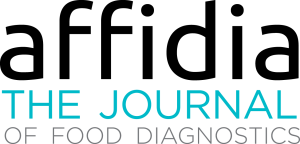Non-targeted methods for official food fraud control: are we ready?
Food fraud (FF) that generates monetary gains is also known as Economically Motivated Adulteration (EMA). It is a widespread practice that undermines not only food authenticity, but also food safety due to the potential presence of toxic or undeclared adulterants. Increasingly accurate and sensitive authentication methods, including a variety of spectroscopy methods, have been used to prevent FF and assure the safety of the food supply chain.
There are ongoing global efforts to harmonize and validate food authenticity methodologies. In the EU, the Food Integrity Project has developed both targeted and non-target methodologies to detect FF. Targeted methodologies identify and quantify one or more primary and secondary analytical markers, while in recent years advanced analytical approaches coupled with chemometric tools have been proposed to characterize and classify foods based on non-targeted fingerprints. Most of these methodologies do not have a well-defined validation protocol, primarily due to the lack both of defined parameters for performance evaluation and of procedures for standardised validation.
To address this gap and provide methodological guidance for harmonizing the validation protocols for non-targeted methods, a 2018 Food Integrity Project white paper outlined good practices and methodological guidelines for the validation and application of the non-targeted analysis for food authenticity and traceability. In 2019 the CEN/TC working groups focused on standardising analytical methods for food authenticity verification and aspects of data evaluation including validation concepts and terms and definitions. Likewise, the Food Authenticity and Fraud programme (FAF) launched by AOAC aimed to identify and develop standard reference methods for targeted and non-targeted approaches to control food material quality and compliance. Unlike targeted testing, non-targeted methods are based on generating a baseline fingerprint of an authentic material and comparing it with test sample fingerprints to identify whether the test samples are authentic or potentially adulterated. Chemometric tools are necessary to statistically elaborate the final results.
Several crucial issues remain unresolved: establishing baseline fingerprints, including the filtering and normalization process often needed for retaining only the useful signals, and the withdrawal of reference materials with their detailed descriptions both of the process for obtaining and evaluating authentic samples and of the test protocol for establishing the baseline fingerprint.
Another important issue is the dataset size because the AOAC SMPR states the number of independent samples should be not less than 30 for each category. The question is whether targeted methodologies will support nontargeted methods if certain prerequisites are not fulfilled.
Could nontargeted methods provide a standalone approach or will targeted methods always be requested for official controls?
Download content now


















